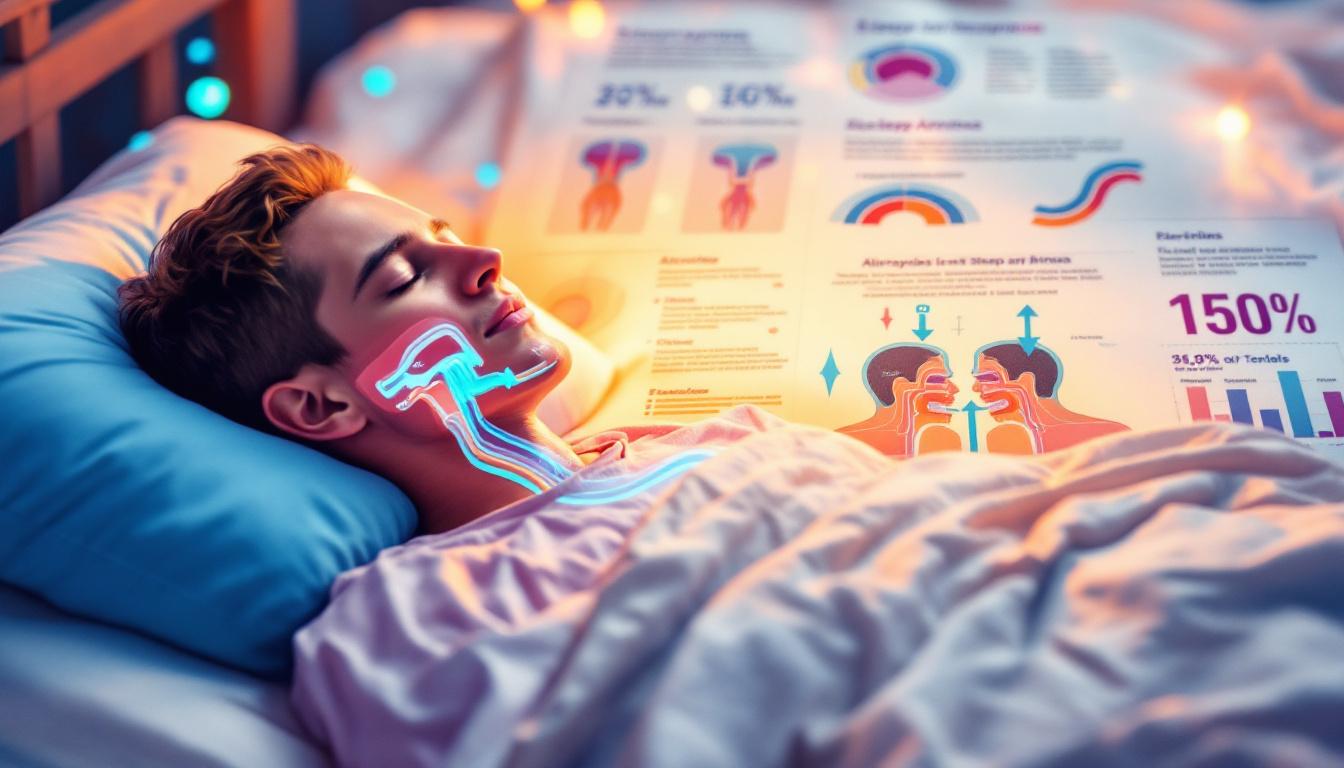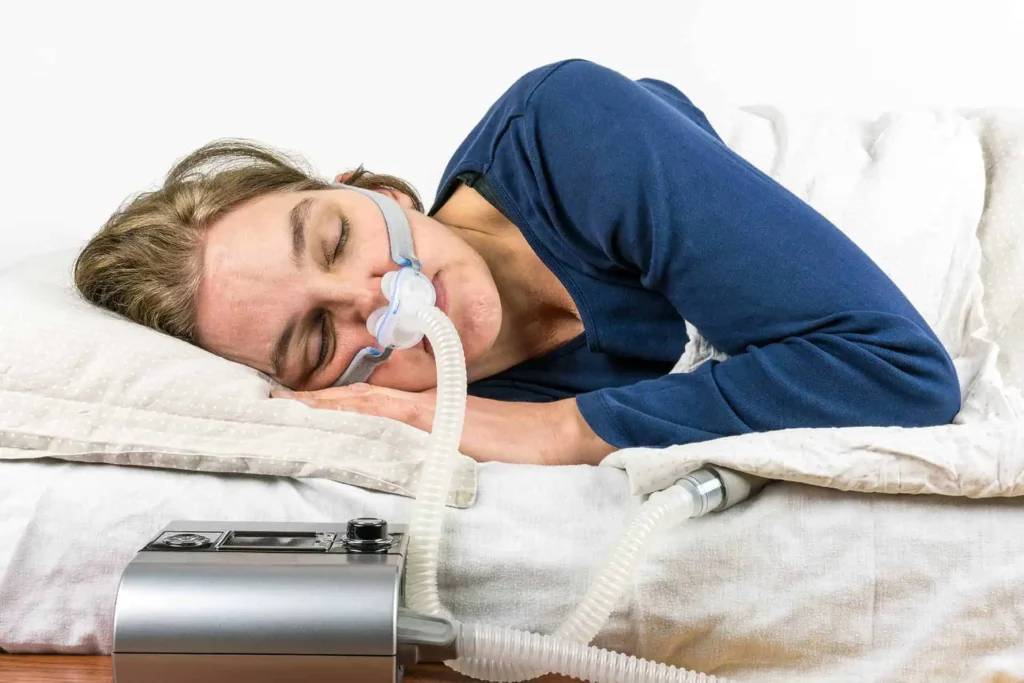Sleep is a vital component of overall health and well-being, yet many individuals struggle with sleep disorders, particularly obstructive sleep apnoea (OSA). Continuous Positive Airway Pressure (CPAP) therapy has emerged as one of the most effective treatments for this condition. However, before commencing CPAP therapy, a sleep study is often required to diagnose the severity of the condition and tailor the treatment accordingly. This article delves into what a CPAP sleep study entails, what patients can expect during the process, and how it ultimately aids those suffering from sleep apnoea.
Understanding Sleep Apnoea
Sleep apnoea is characterised by repeated interruptions in breathing during sleep, which can lead to fragmented sleep and decreased oxygen levels in the blood. The most common form, obstructive sleep apnoea, occurs when the throat muscles relax excessively, blocking the airway. Symptoms often include loud snoring, gasping for air during sleep, excessive daytime sleepiness, and difficulty concentrating.
A CPAP sleep study is a critical step in diagnosing and treating obstructive sleep apnoea. Understanding what to expect during the process can help alleviate anxiety and ensure a successful evaluation. With the right diagnosis and effective CPAP therapy, patients can significantly improve their sleep quality and overall health, leading to a more vibrant and fulfilling life.

Diagnosis typically involves a sleep study, which can be conducted in a sleep lab or at home. This study measures various physiological parameters during sleep, providing crucial insights into the severity of the condition and guiding treatment options.
The CPAP Sleep Study Process
A CPAP sleep study, also known as polysomnography, is a comprehensive evaluation that monitors multiple body functions while you sleep. This process is essential for diagnosing sleep apnoea and determining the appropriate CPAP settings for effective treatment.
There are two primary types of sleep studies: in-lab studies and home sleep tests. Each has its own advantages and is suited to different patient needs.
More to read on: Sleep Apnea Test Near Me Finding Local and Reliable Options
In-Lab Sleep Studies
In-lab sleep studies are conducted in a sleep centre, where patients are monitored overnight. Upon arrival, patients will be shown to a private room equipped with a bed and various monitoring devices. Technicians will attach sensors to the patient’s body to measure brain activity, eye movements, heart rate, blood oxygen levels, and airflow.
During the study, patients are encouraged to sleep as they normally would. The technician will observe the patient throughout the night, ensuring that all equipment is functioning correctly. In-lab studies are particularly beneficial for patients with complex sleep disorders or those who may require additional monitoring. Read more about equipment on https://cbet.edu/
Home Sleep Tests
Home sleep tests offer a more convenient alternative for diagnosing sleep apnoea. These tests typically involve a portable device that patients can use in the comfort of their own homes. The device is equipped with sensors to monitor breathing patterns, heart rate, and oxygen levels during sleep.
While home tests are less comprehensive than in-lab studies, they can effectively diagnose moderate to severe obstructive sleep apnoea. Patients are provided with instructions on how to use the device, and results are usually reviewed by a sleep specialist.
What to Expect During the Sleep Study
Regardless of the type of study, patients often have questions and concerns about what to expect. Understanding the process can alleviate anxiety and help ensure a successful evaluation.

Preparation for the Study
Before the sleep study, patients may be advised to avoid caffeine and alcohol for at least 24 hours, as these substances can interfere with sleep quality. It is also essential to maintain a regular sleep schedule leading up to the study to ensure accurate results.
Patients should bring along any medications they typically take at night, as well as comfortable sleepwear. If a patient uses a CPAP machine, they should bring it along for the study, as it may be used during the evaluation.
During the Study
Once at the sleep centre or home, patients will be connected to the monitoring equipment. In an in-lab study, this may involve attaching electrodes to the scalp, face, and chest, as well as placing a sensor on the finger to measure oxygen levels. Patients will then be instructed to lie down and try to sleep as normally as possible.
For home sleep tests, patients will set up the device according to the provided instructions. They will wear the device throughout the night, ensuring that it remains in place for accurate readings. Patients should aim to sleep in their usual position to obtain the most reliable data.
Post-Study Process
After the sleep study is complete, the data collected will be analysed by a sleep specialist. The results will determine whether the patient has sleep apnoea and, if so, the severity of the condition. Based on these findings, the specialist will recommend an appropriate treatment plan, which often includes CPAP therapy.
Patients will typically receive a follow-up appointment to discuss the results and next steps. Understanding the findings can empower patients to take control of their sleep health and improve their quality of life. To learn more about quality click here.
How CPAP Therapy Helps Sleep Apnoea Patients
CPAP therapy is considered the gold standard for treating obstructive sleep apnoea. It involves the use of a machine that delivers a continuous stream of air through a mask, keeping the airway open during sleep. This therapy can significantly improve sleep quality and overall health.
Patients often report feeling more rested and alert during the day after starting CPAP therapy. Additionally, it can reduce the risk of associated health complications, such as cardiovascular disease, hypertension, and diabetes.
Benefits of CPAP Therapy
- Improved Sleep Quality: CPAP therapy helps eliminate apnoeic episodes, allowing for uninterrupted sleep and reducing daytime fatigue.
- Enhanced Cognitive Function: Better sleep leads to improved concentration, memory, and overall cognitive performance.
- Reduced Health Risks: Effective treatment of sleep apnoea can lower the risk of serious health issues, including heart disease and stroke.
- Better Mood and Quality of Life: Patients often experience improved mood and a higher quality of life after starting CPAP therapy.
Challenges and Considerations
While CPAP therapy is highly effective, some patients may encounter challenges when first using the device. Common issues include discomfort from the mask, difficulty adjusting to the airflow, and feelings of claustrophobia.
To address these challenges, it is crucial for patients to work closely with their healthcare provider. Adjustments can often be made to the mask type or pressure settings to enhance comfort. Additionally, support groups and educational resources can provide valuable tips and encouragement for those new to CPAP therapy.
